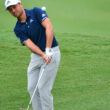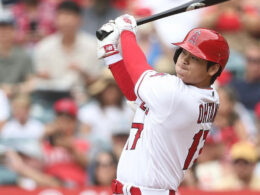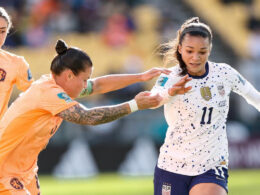By Grant Tingley
To put sports betting in the simplest terms, it is basically making an educated guess about the outcome of an event. So it would make sense to use any available resources to make the most educated guess. And there are plenty of different types of data and statistics that can be used when placing a wager.
Historical Trends
Historical data can often predict future performance. A player or team that has performed well (or poorly) all season is probably not going to turn that around all of a sudden. If past meetings between two teams have always featured a lot of points scored, another high-scoring contest could be in store. If a player has reached a certain threshold in most (or all) of the games he or she has played in, that threshold will likely be reached again.
Tom Brady is 0-10 against the spread in his last 10 primetime games.
— DraftKings Sportsbook (@DKSportsbook) October 14, 2021
(via @ActionNetworkHQ) pic.twitter.com/2raOQZKmAU
Obviously, oddsmakers also know this, so the lines and odds will usually reflect those historical trends. But value can still be found. Say, for instance, that Manchester United is playing Chelsea this season. Both teams have a lot of offensive talent and each has scored multiple goals in its last few matches. But the total has gone under 2.5 goals each of the last four times Manchester United has played a top-five team. The odds might reflect the teams’ most recent matches, rather than the recent history in these types of matches. That could present an opportunity to bet under 2.5 goals at a good price.
Line Movements/Sharp Betting
A spread or total will often move a little bit in the lead-up to a game. A few different factors can cause a line to move, such as injuries and weather (more on that later), but the most common factor is a lot of money being put on a certain side. That either means most people who are betting on that event are betting on that particular side, or it means sharps are favoring that side.
Sharps are professional sports gamblers, so although they aren’t psychics, they have a lot more knowledge and experience than most when it comes to sports betting. If more people are betting on one side, but more money is being put on the other side, that usually means that sharps are betting against the general public. Sharps putting a lot of money on one side moves the line in that direction. So if the total in the SMU-Houston football game is 59 and a lot of money is being put on the over, the total may move to 60 or 61.
Location, Weather, & Injuries
Home-field advantage is real. Teams do receive an edge from playing in a familiar place in front of fans that are trying to make life hell for the opposing team (and from not having to travel). For that reason, some of the best bets to make are on home underdogs.
Weather can also present a real advantage (or disadvantage). Just as the weather forecast informs people when it comes to what they’re going to wear that day, it can also inform sports bettors. If the forecast calls for strong winds and snow at kickoff of the Bills-Colts game, the under looks a lot more appealing than it might in normal conditions.
A snow game for the ages.
— NFL (@NFL) April 2, 2020
Plus other full games… for FREE on YouTube!
Watch here: https://t.co/TJEo6jINy8 pic.twitter.com/WxXInJ6czs
Just like with the weather, always keep an eye on the injury report when betting on sporting events. If a basketball team decides to rest its star player for a certain game, that will have a major influence on the betting lines. If there are rumors that a player might not play due to injury but the betting lines haven’t changed to reflect that, it could be an opportunity to bet on the other team before they do change. Risk is involved, but it might be a risk worth taking.
Those are just a few of the bevy of resources one can use to make a more informed bet. Ultimately, it’s up to the individual person to interpret the data and make a decision, and ultimately, it’s still a guess, but you’re making a guess, you might as well make an educated one.
Picture Credit: aimemente








